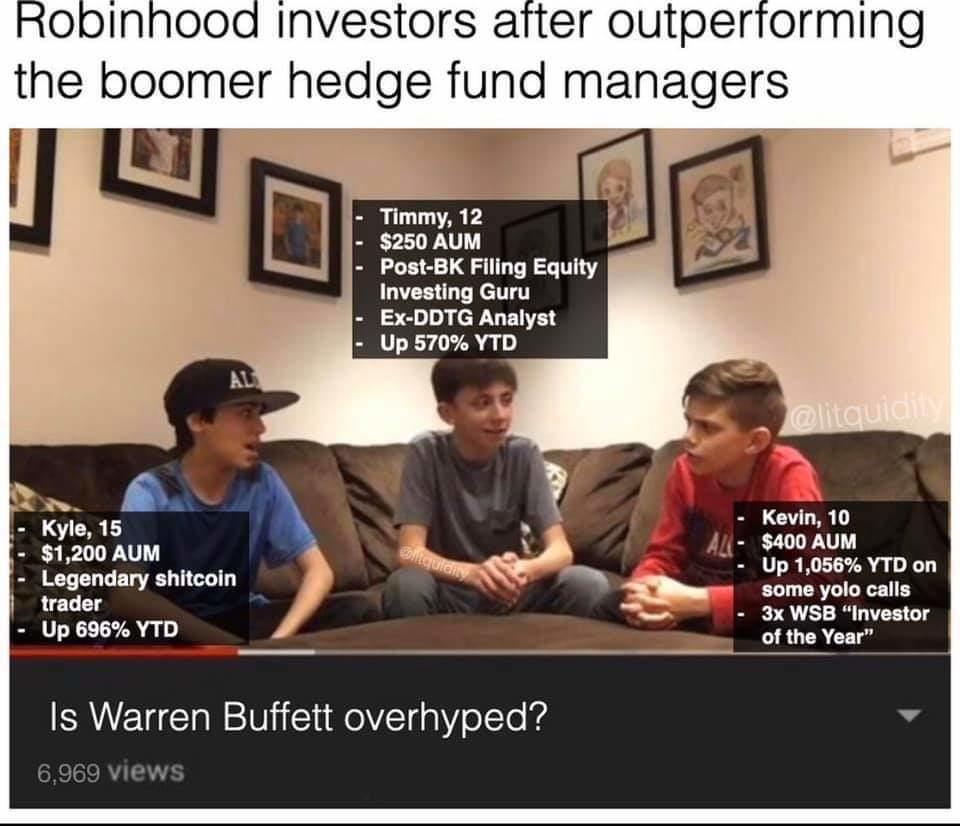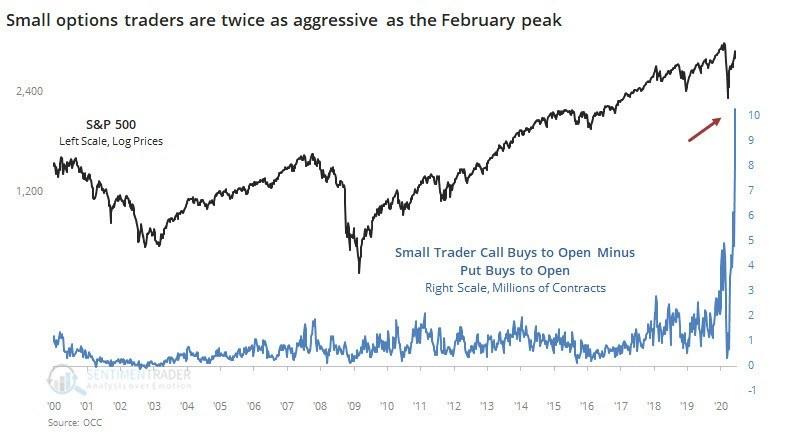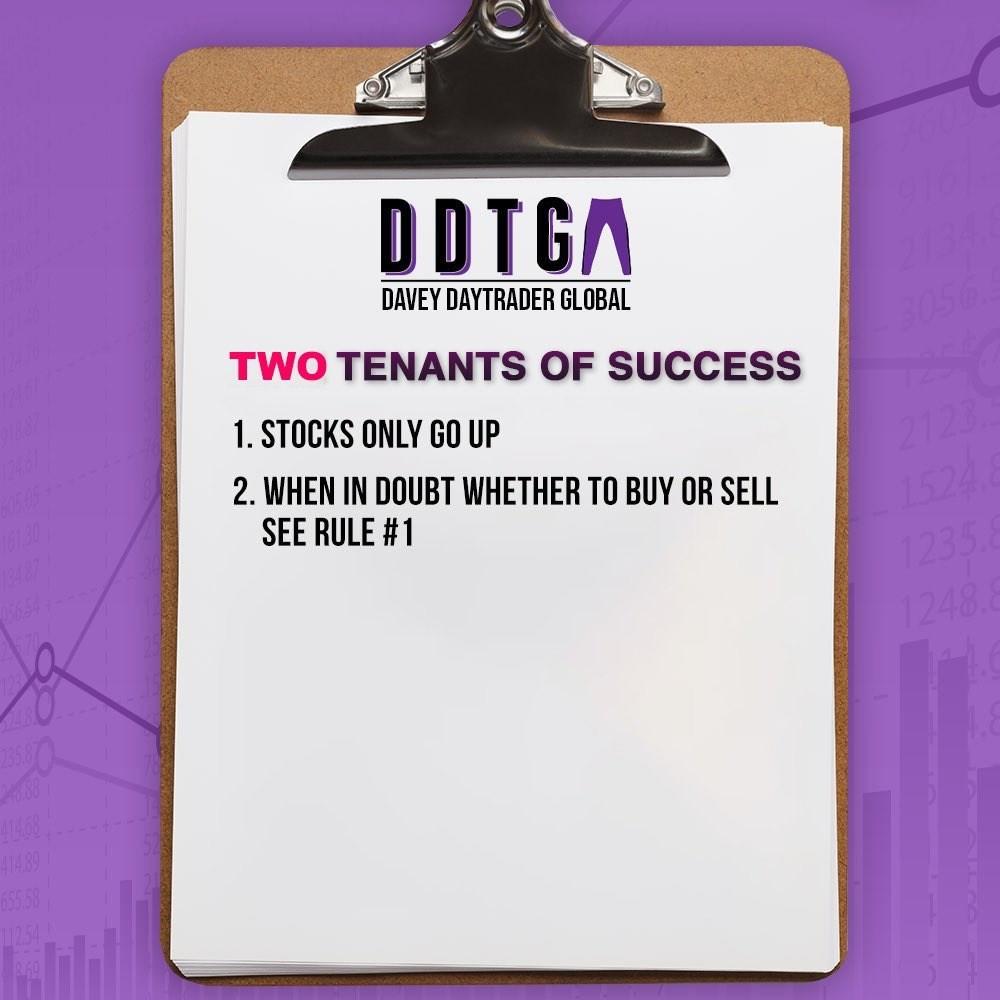Stocks Only Go Up…
Tyler Durden
Fri, 06/19/2020 – 13:51
Via AdventuresInCapitalism.com,
I have always run my book with two distinct buckets.
-
One bucket is focused on “global micro trends,” which means that I find thematic inflections in global markets and position myself in small and mid-cap names that are likely to benefit. This is the fun stuff that I like to write about.
-
My other bucket, which I rarely write about, is focused on event-driven, tactical opportunities in idiosyncratic market dislocations and mispricing. Rarely do these two buckets overlap, but of course, 2020 is anything but the norm.
Starting in late 2019, I noticed a change in market structure—suddenly and relentlessly, Implied Volatility (IV) for smaller companies began to increase. At the time, I attributed it to the accelerating economic recession that started in the third quarter of 2019. However, even as the VIX made new lows during the winter, the IV of many smaller companies I follow continued to increase. It was a curious divergence at a time full of curious divergences. Then, COVID-19 hit, the markets went bonkers and I sort of forgot about it, until things quieted down in the broader VIX during June, while the IV in my names only partly declined from peak levels back in March.
Now, you can attribute this to many causes. For starters, realized volatility is simply off the charts for the past few months. Dealer desks have been replaced by stay-at-home traders in bathrobes who don’t exactly have the permission of risk managers to take directional bets and compress IV. Besides, no one knows what will happen on dozens of complex issues from the economic, to the social to the geopolitical, to the election itself in November. The range of possibilities is massive and the world is clearly unsettled—volatility ought to be elevated, but should prosaic names with clean balance sheets trade at triple digit IVs?
With that in mind, it’s time to point out the newest variable – Robinhood.
While the average account at Robinhood is small, the capital deployed and the cohesion of investing strategies is terrifying. In the past, a group of investors conspiring to buy out of the money (OTM) calls and gamma-screw the dealers was illegal. Now, various message boards openly recruit members to run stocks up in thin after-hours sessions when market makers are least able to hedge their books. Tilray (TLRY – USA) may have been the first coordinated mob-rush over $1 billion, but there have been dozens since. What market maker wants to take the other side of such risk?
These factors have then been accentuated by the listing of weekly options on many stocks. No longer do you need to buy a month of Theta. Now you can buy Thursday OTM paper for pennies and play your games with almost nothing risked. In summary, while there are factors unique to 2020’s overall realized volatility, there are also structural factors that may now be semi-permanent. The ability of a horde of retail to corner the market in a billion Dollar stock has never existed until now. It’s new and is suddenly getting reflected in the unusually elevated IVs of rather mundane companies. Nothing in markets is ever permanent, but this one may be with us for quite some time.
Thus far, all of Robinhood’s attacks have been on call options. Bear raids are simply harder to orchestrate. That said, a put is really just a reflection of call option volatility (yeah, yeah, I know there’s more to it, but let’s roll with it for now). I want to draw your attention to these puts as we seem to be entering a time where many of them are structurally overvalued.
Throughout my career, there were always a handful of battlefield stocks with elevated put volatility, it was more a curiosity than something bankable. Suddenly, companies I actually want to own have triple digit IV. You can go far OTM writing puts and earn a high-single-digit percent monthly return. You can sometimes earn well past 20% for at the money (ATM) monthly paper. It’s gotten to the point where owning shares seems sub-optimal when compared with the alternative of writing puts and compounding at double-digit monthly rates (unless you’re long shares and selling covered calls which are also suddenly quite attractive). Don’t think of this as style drift on my part—I’m still structurally long undervalued stocks, I’m just expressing it through time decay.
Normally, when IV is high, it is because the market has just crashed and everyone is focused on buying stocks that are down 80%—IV is high because there’s no one taking the other side of it as there are better uses for capital. This is different, I simply cannot think of a time when the market has been a few percent off all-time highs and you could earn double-digit returns writing short-dated puts on low risk names.
At worst, you get long something you’d like to own at a discount to today’s price. I’m not here giving any premium writing targets—that’s for you to sort out. Rather, I want to note that small-cap volatility is unusually elevated and I think it may be somewhat structural as millions of Robinhooders machine-gun the market makers with 2-lots. You don’t get very many times where you can be the casino and play against retail who seem to enjoy massively overpaying for options, but selling puts in certain names sure seems like that sort of scenario.
Having noted that these puts are structurally mispriced, I’d be remiss if I didn’t end with one broad based warning; writing puts is like crack, it’s amazingly addictive and your broker will stand around feeding you margin while you overdose.
NEVER write more premium than your ability to absorb the notional value of the underlying if you got assigned on EACH and EVERY one of them.
In summary, we’re in a unique moment in time where my new favorite “global micro trend” (massive inflows of capital from brain-dead retail investors) mixes with my idiosyncratic event-driven bucket (short-term market dislocations). Market makers are stepping back and retail is running rough-shod over professionals. IV is higher than where it should be (potentially structurally) and I’m taking advantage of it by writing puts. Besides, J-POW has my back…


